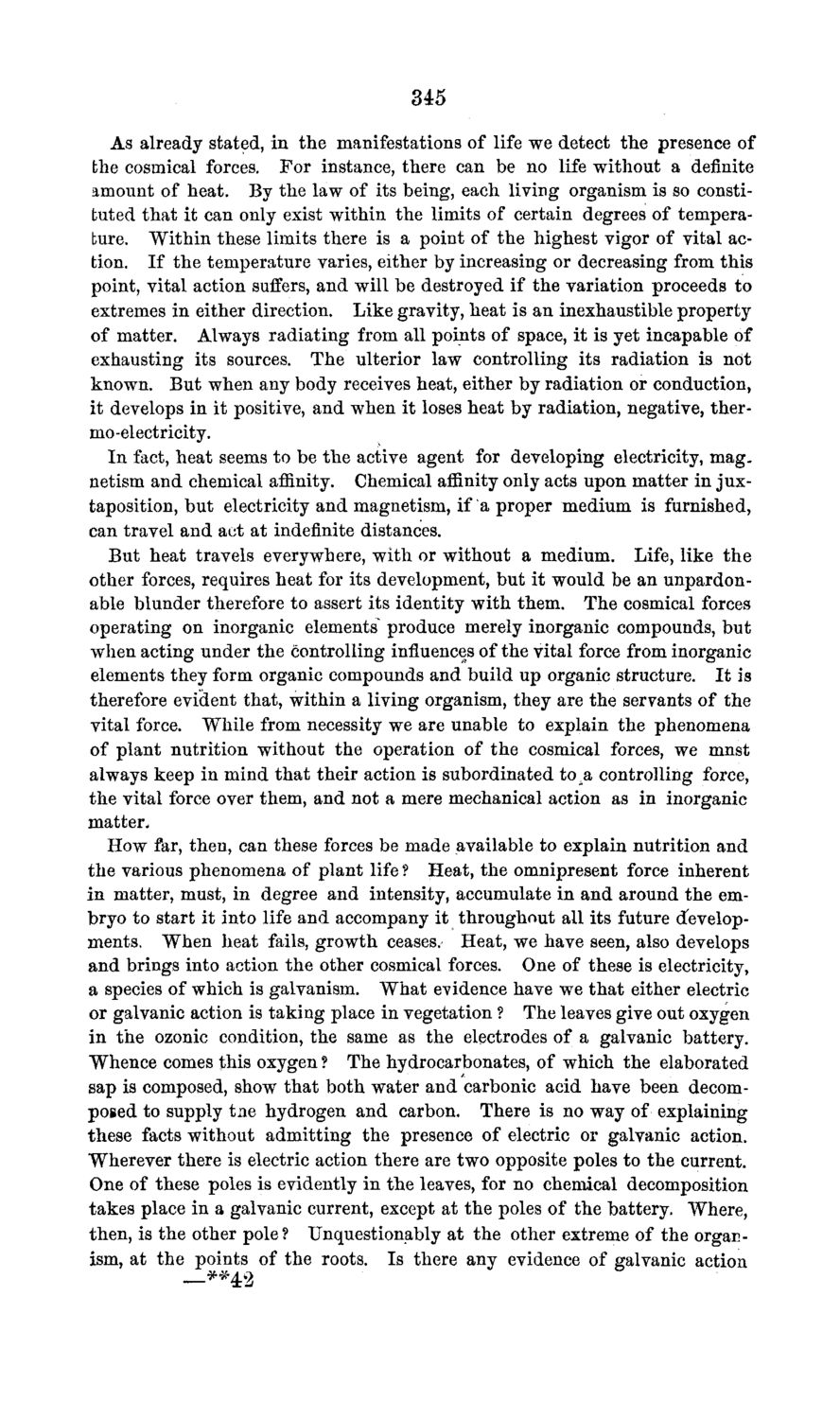| |
| |
Caption: Board of Trustees Minutes - 1869
This is a reduced-resolution page image for fast online browsing.

EXTRACTED TEXT FROM PAGE:
345 As already stated, in the manifestations of life we detect the presence of the cosmical forces. For instance, there can be no life without a definite amount of heat. By the law of its being, each living organism is so constituted that it can only exist within the limits of certain degrees of temperature. Within these limits there is a point of the highest vigor of vital action. If the temperature varies, either by increasing or decreasing from this point, vital action suffers, and will be destroyed if the variation proceeds to extremes in either direction. Like gravity, heat is an inexhaustible property of matter. Always radiating from all points of space, it is yet incapable of exhausting its sources. The ulterior law controlling its radiation is not known. But when any body receives heat, either by radiation or conduction, it develops in it positive, and when it loses heat by radiation, negative, thermo-electricity. In fact, heat seems to be the active agent for developing electricity, magnetism and chemical affinity. Chemical affinity only acts upon matter in juxtaposition, but electricity and magnetism, if a proper medium is furnished, can travel and act at indefinite distances. But heat travels everywhere, with or without a medium. Life, like the other forces, requires heat for its development, but it would be an unpardonable blunder therefore to assert its identity with them. The cosmical forces operating on inorganic elements produce merely inorganic compounds, but when acting under the controlling influences of the vital force from inorganic elements they form organic compounds and build up organic structure. It is therefore evident that, within a living organism, they are the servants of the vital force. While from necessity we are unable to explain the phenomena of plant nutrition without the operation of the cosmical forces, we mnst always keep in mind that their action is subordinated to a, controlling force, the vital force over them, and not a mere mechanical action as in inorganic matter. How far, then, can these forces be made available to explain nutrition and the various phenomena of plant life ? Heat, the omnipresent force inherent in matter, must, in degree and intensity, accumulate in and around the embryo to start it into life and accompany it throughout all its future developments, When heat fails, growth ceases. Heat, we have seen, also develops and brings into action the other cosmical forces. One of these is electricity, a species of which is galvanism. What evidence have we that either electric or galvanic action is taking place in vegetation ? The leaves give out oxygen in the ozonic condition, the same as the electrodes of a galvanic battery. Whence comes this oxygen ? The hydrocarbonates, of which the elaborated sap is composed, show that both water and carbonic acid have been decomposed to supply tiie hydrogen and carbon. There is no way of explaining these facts without admitting the presence of electric or galvanic action. Wherever there is electric action there are two opposite poles to the current. One of these poles is evidently in the leaves, for no chemical decomposition takes place in a galvanic current, except at the poles of the battery. Where, then, is the other pole? Unquestionably at the other extreme of the organism, at the points of the roots. Is there any evidence of galvanic action _#*4:2
| |